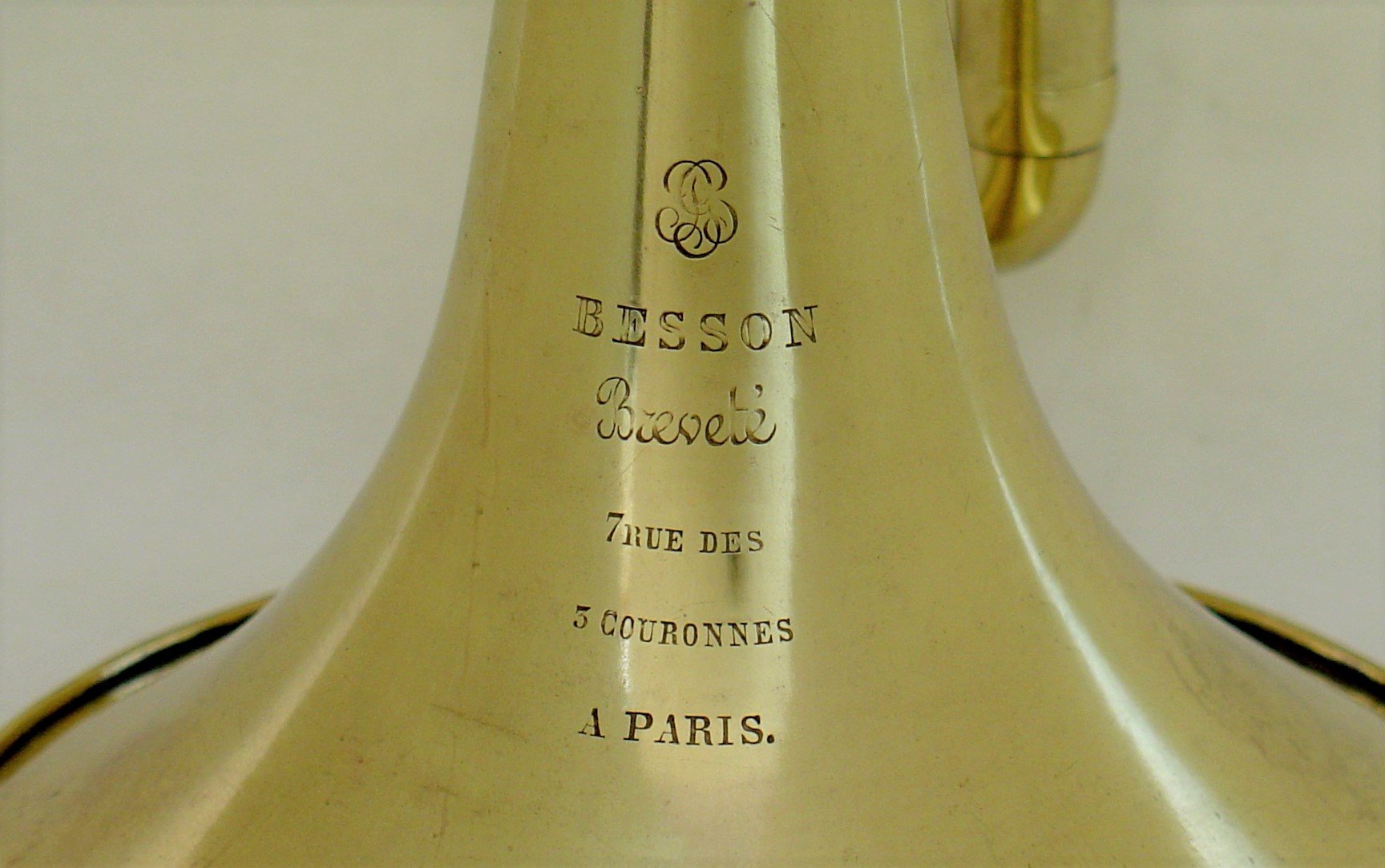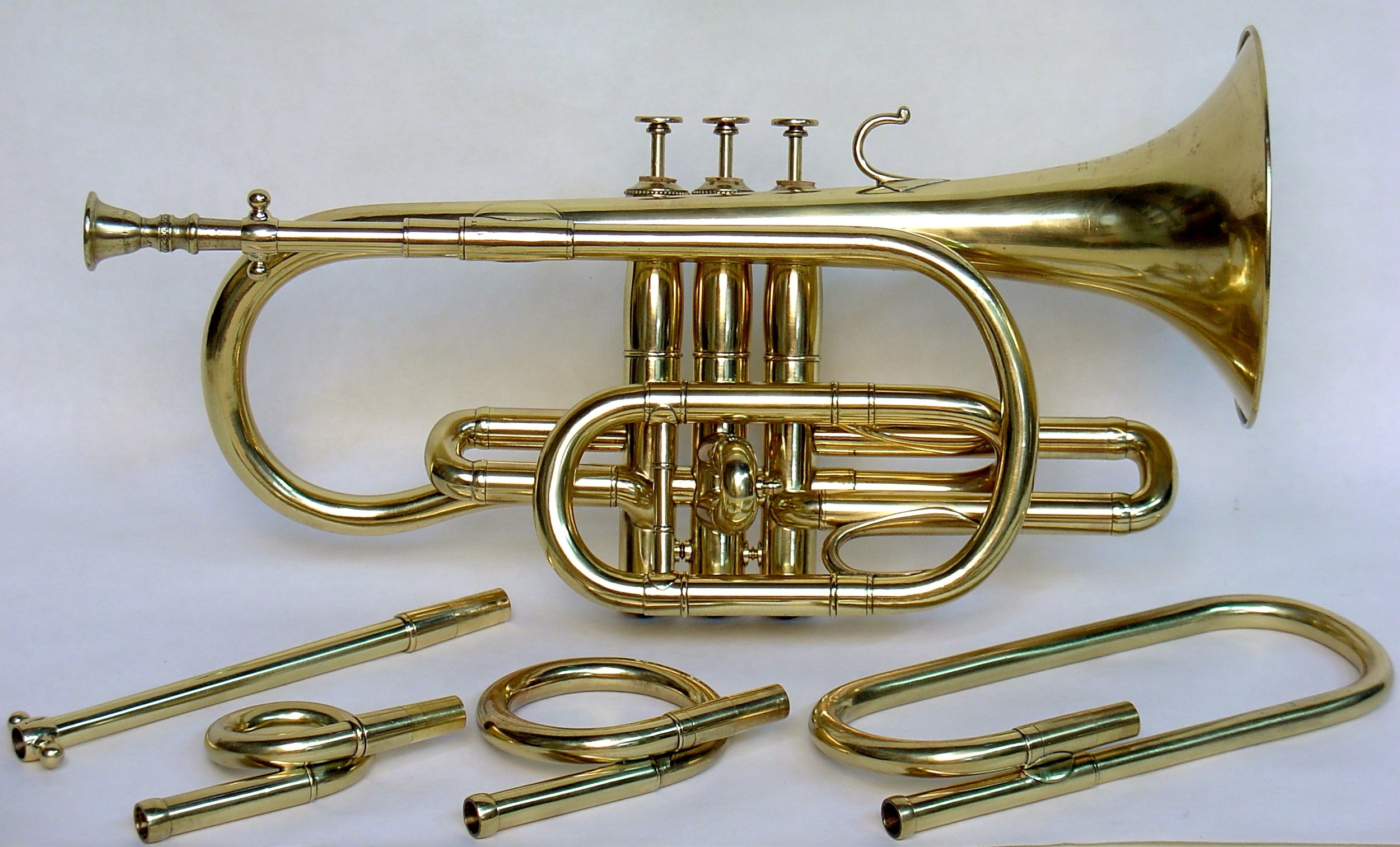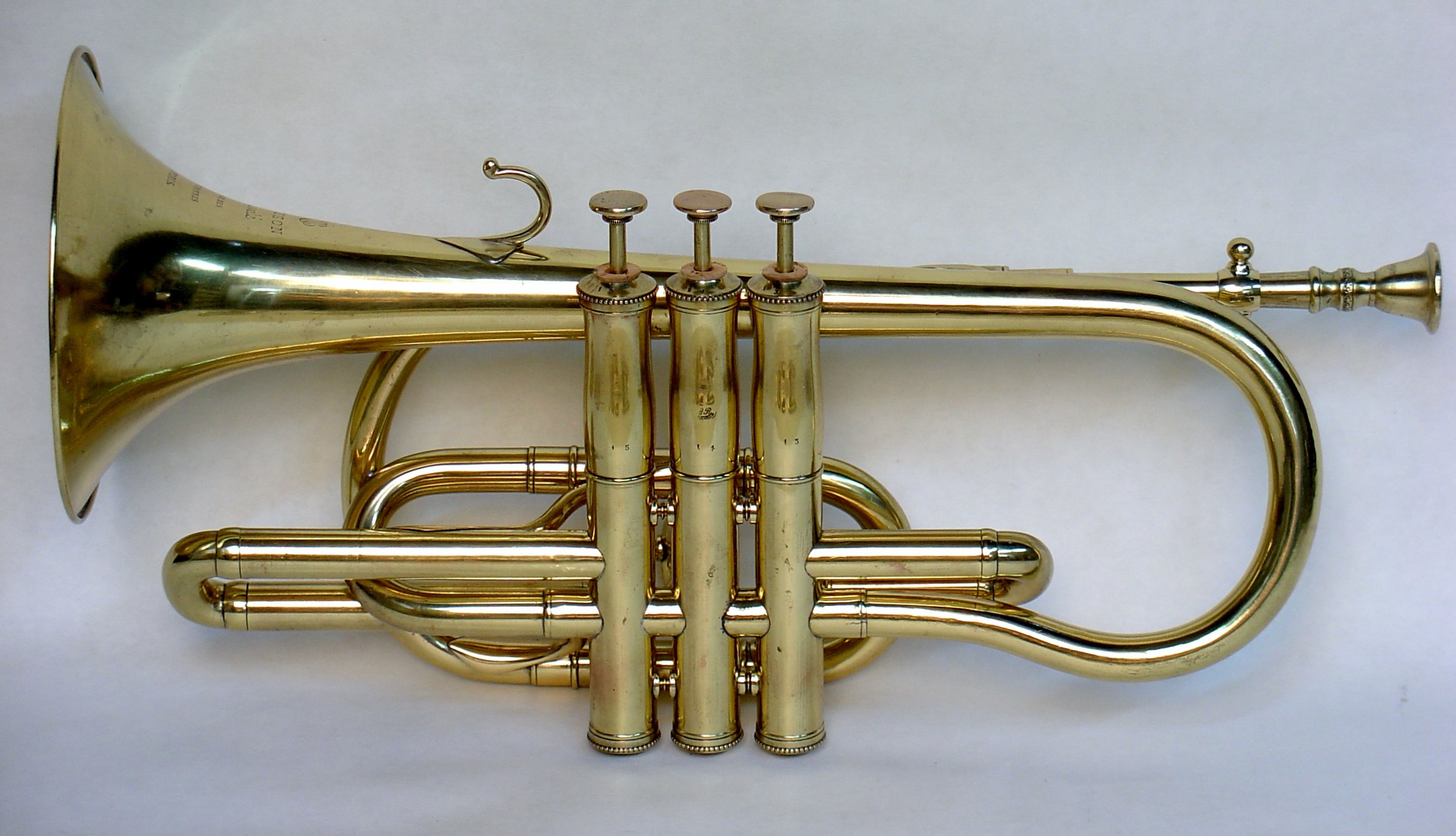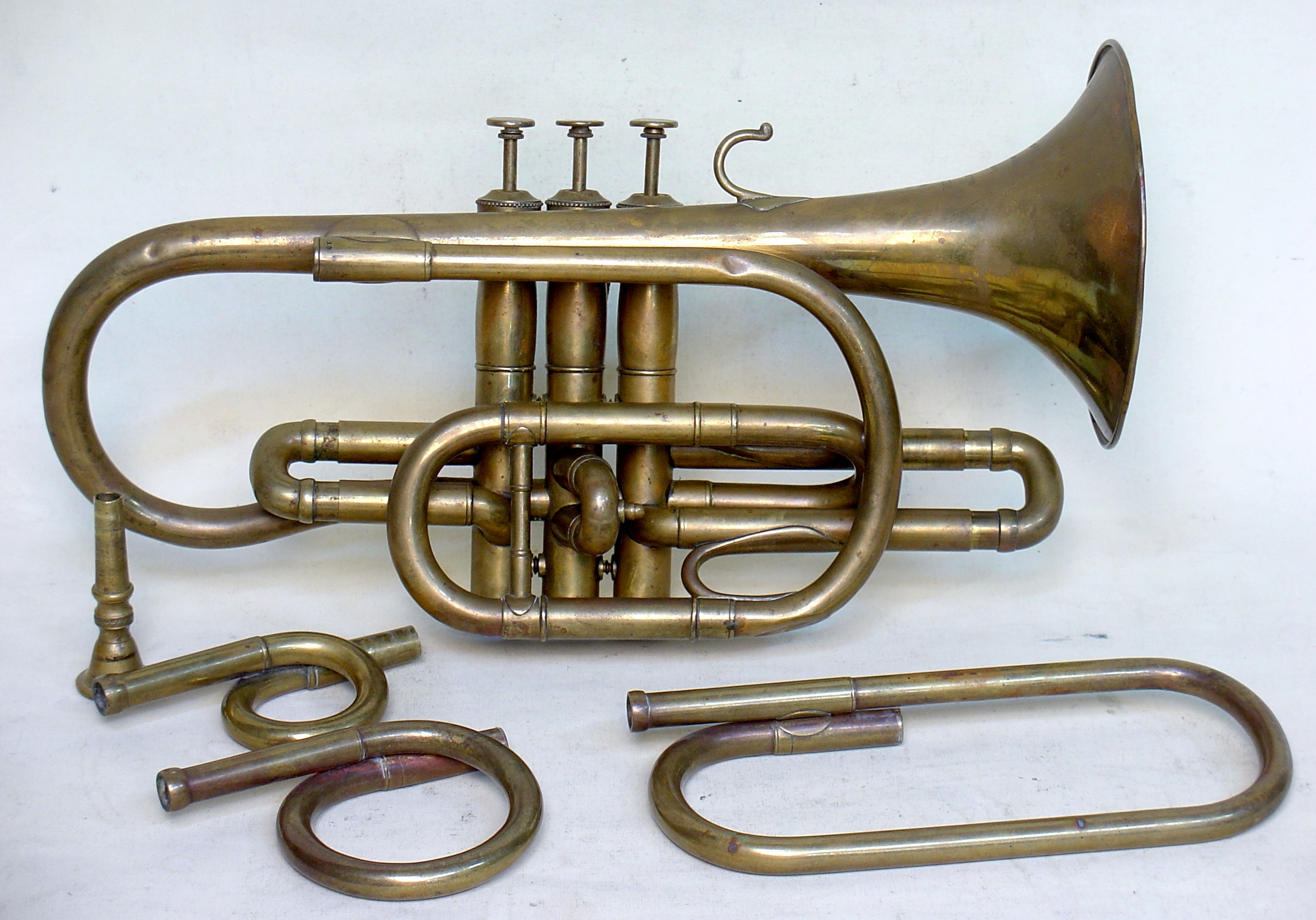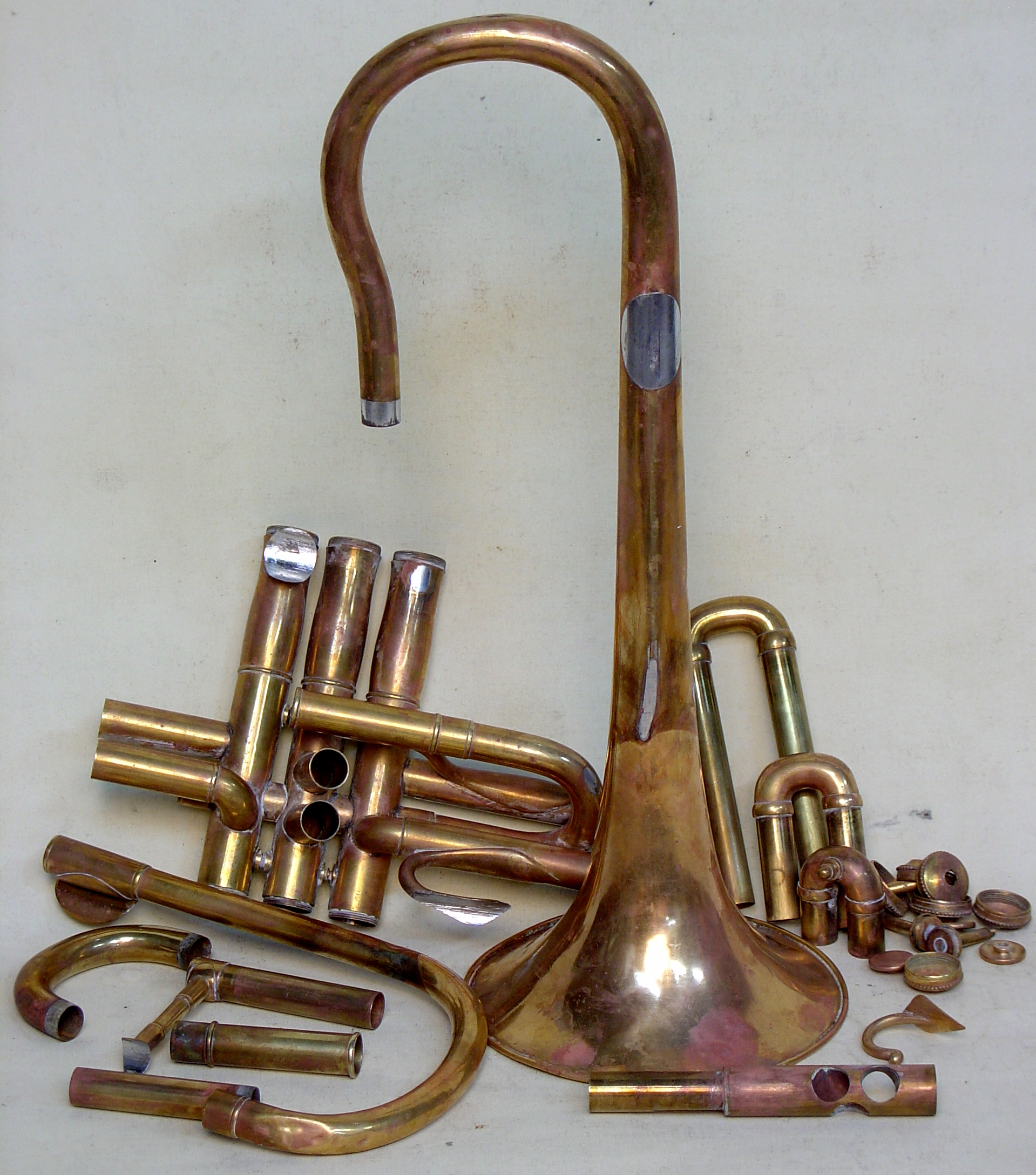Bb Cornet by Gustave Besson, 1852
Most of us with more than a casual interest in brass instrument history would agree that Besson and Courtois were the two most important makers in the development of the French style cornet. Also, Besson went on to design the modern trumpet. In view of these facts, it is surprising how little we seem to know about Besson's earliest years of production. According to the Langwill index, Gustave Auguste Besson apprenticed with another Paris maker, Dujarez, of whom even less is known.
M. Besson established his own shop in about 1842 and moved to 7 rue des 3 Couronnes in about 1845 and that is where this cornet was made. On first examination, this cornet has no serial number and presumably predates the earliest known instruments that he stamped serial numbers on, in about the mid- to late 1850s. There is a small "19" stamped on the mouthpipe shank receiver, that I originally thought might indicate that this was a replaced part, never having seen this on a Besson instrument before. I was set straight by Josh Landress, confirming the number that he could see was original. In his research, Josh was starting to make some sense of the cornets being sold by Pask & Koenig and then Pask & Besson in London that were marked in this way and was becoming convinced that these were also made by G. Besson, in Paris.
This valve design was patented in Paris by Charles Edme Rödel in 1852 that specified air passages straight through the three valves, unlike in the earlier designs patented by Étienne François Périnet in 1839 and made in variations by most Paris makers including Besson. Interestingly, the valve design involves ports in the first and third pistons that make complete 180 degree turns as seen in seen in the third piston of Niles Eldredge's Stoelzel valve Besson cornet that was likely made several years later. Also, when a valve was depressed, the air passage was still constricted within the piston and the design of the second valve is very much the same as Périnet.
Another anomaly is the stamp on the second valve balluster. Unfortunately, it is a partial strike and may have some information missing. What can be clearly seen is "BR / Brevete", but it is unknown what the "BR" abbreviates. My best guess was "Brevete du Rois" because this was most likely made during the reign of Napoleon III. Josh Landress and Niles Eldredge had the more likely guess that it abbreviates “Breveté Rödel. This valve assembly was certainly made by Rödel.
Rödel made additions to his patent within a year and the following year and Gustave Besson patented another variation of the Périnet design in 1854. It seems highly likely that this cornet was made before the latter of those patents.
This cornet is in the collection of Tom Meacham, purchased from a French collector who had photographs of it on his website, where it was hidden in plain sight. The restoration was very straightforward, the most difficult part being the repair of a piston that had been punched through from the bottom in an attempt to free it from the casing. I made replacements of the missing Bb and A mouthpipe shanks. The crooks are not a matched set, but are of the correct size and style. I believe that the Ab crook is the only one original to this cornet and the G and F crooks came from another French cornet of the period. The mouthpiece is of high quality and a very early French example, but is probably not made by Besson.

